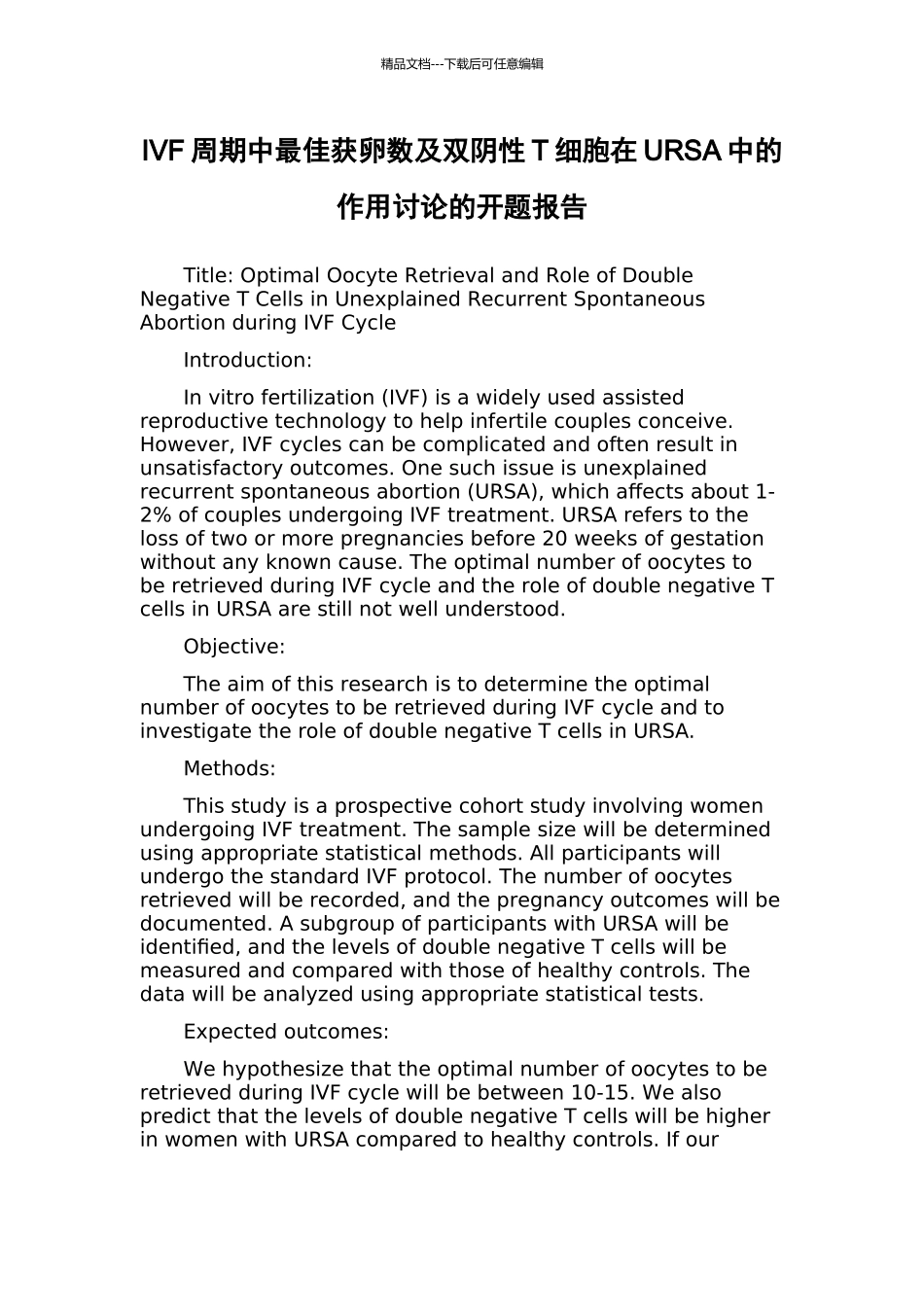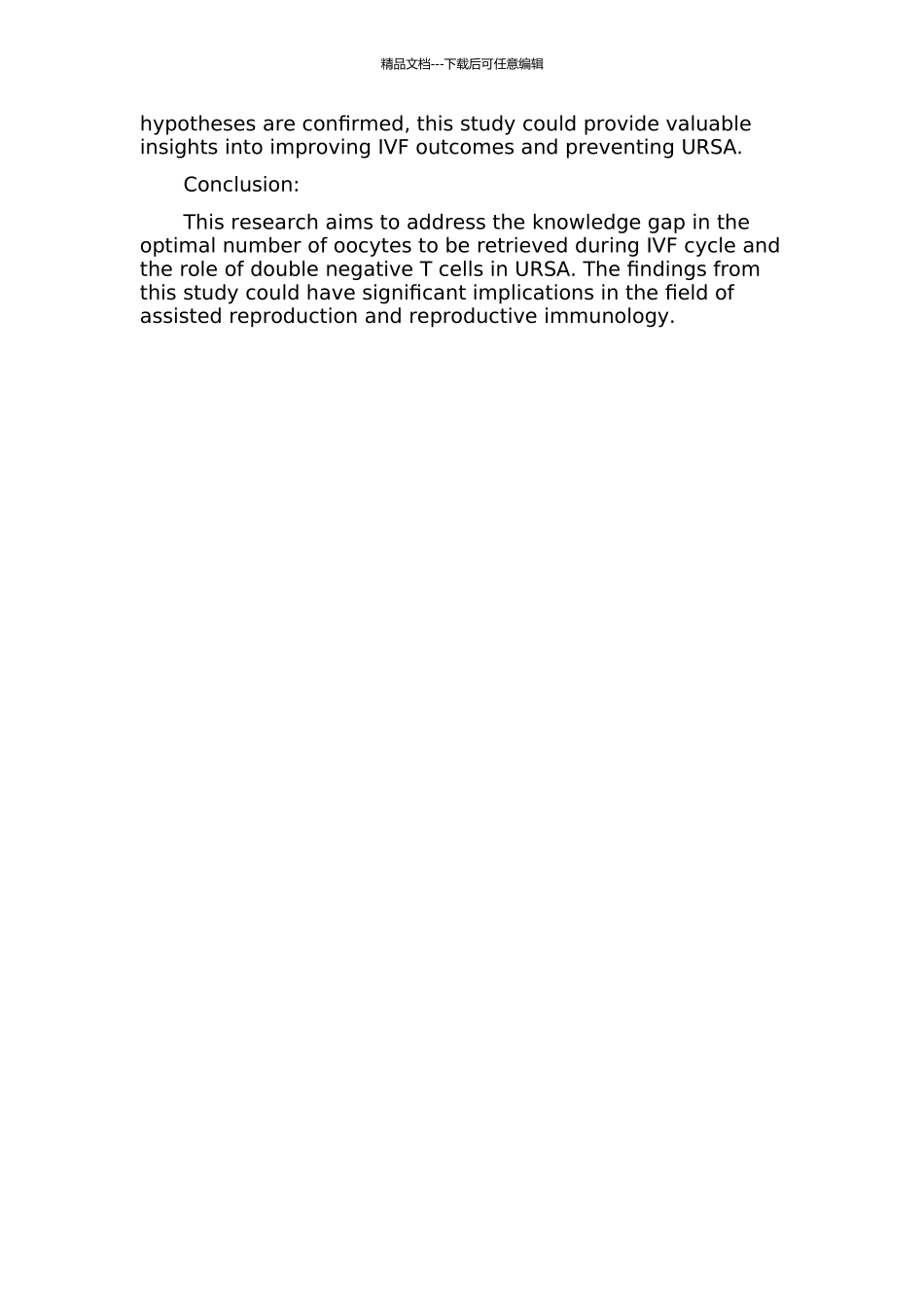精品文档---下载后可任意编辑IVF 周期中最佳获卵数及双阴性 T 细胞在 URSA 中的作用讨论的开题报告Title: Optimal Oocyte Retrieval and Role of Double Negative T Cells in Unexplained Recurrent Spontaneous Abortion during IVF CycleIntroduction:In vitro fertilization (IVF) is a widely used assisted reproductive technology to help infertile couples conceive. However, IVF cycles can be complicated and often result in unsatisfactory outcomes. One such issue is unexplained recurrent spontaneous abortion (URSA), which affects about 1-2% of couples undergoing IVF treatment. URSA refers to the loss of two or more pregnancies before 20 weeks of gestation without any known cause. The optimal number of oocytes to be retrieved during IVF cycle and the role of double negative T cells in URSA are still not well understood.Objective:The aim of this research is to determine the optimal number of oocytes to be retrieved during IVF cycle and to investigate the role of double negative T cells in URSA.Methods:This study is a prospective cohort study involving women undergoing IVF treatment. The sample size will be determined using appropriate statistical methods. All participants will undergo the standard IVF protocol. The number of oocytes retrieved will be recorded, and the pregnancy outcomes will be documented. A subgroup of participants with URSA will be identified, and the levels of double negative T cells will be measured and compared with those of healthy controls. The data will be analyzed using appropriate statistical tests.Expected outcomes:We hypothesize that the optimal number of oocytes to be retrieved during IVF cycle will be between 10-15. We also predict that the levels of double negative T cells will be higher in women with URSA compared to healthy controls. If our 精品文档---下载后可任意编辑hypotheses are confirmed, this study could provide valuable insights into improving IVF outcomes and preventing URSA.Conclusion:This research aims to address the knowledge gap in the optimal number of oocytes to be retrieved during IVF cycle and the role of double negative T cells in URSA. The findings from this study could have significant implications in the field of assisted reproduction and reproductive immunology.

